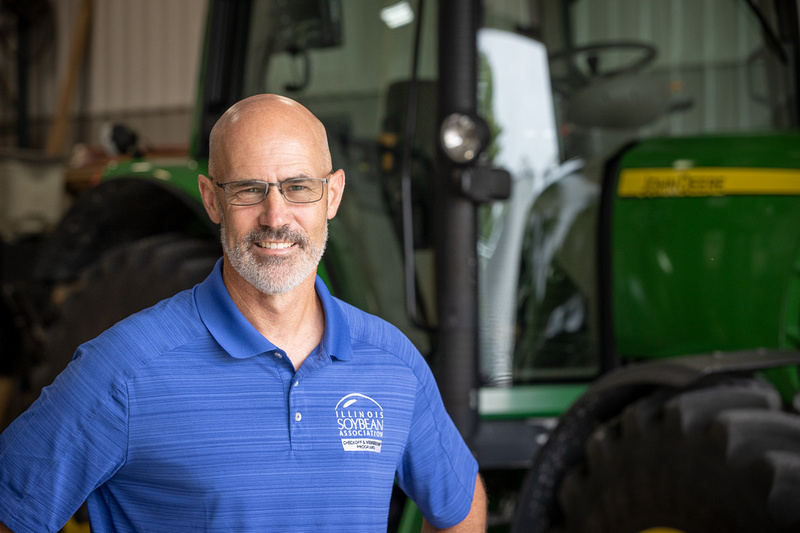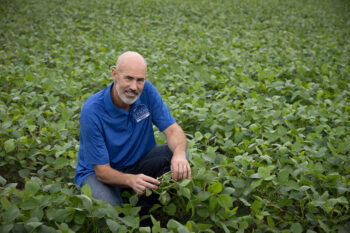
Sixth-generation farmer Jeff O’Connor and his wife Gina own OC Farms – a 325-hectare (800-acre) operation near the small town of Irwin in Kankakee County, Illinois. The O’Connor family settled in this area in the late 1800s and has been farming here ever since. Today they grow soybeans, corn, and wheat.
A certified Sustainability Specialist, Jeff uses a variety of conservation practices to boost his already-fertile land, the result of a glacial outwash event. The historic event left his fields with high and low areas of crop yields and varying degrees of natural drainage.
Two of the practices making a significant difference to the health of his land are cover crops and the use of pollinator habitats.
“Cover crops improve water quality and clarity through reduced run-off of soil particles during heavy rain events and the sequestration of excess nutrients that would make their way into the local watershed,” says Jeff. “The use of pollinator habitats is strategically placed so they filter water from field run-off and help promote insect diversity and health.”
However, like many U.S. farmers, Jeff is committed to continuous improvement, and he is always looking for the next practice that will boost the health of his soil and enhance his operation.

“I would love to become more comfortable using multi-species cover crop mixes in front of corn,” Jeff says. “Using these covers to make more nutrients available through improved soil health, I have come to believe that a “healthy” soil has the ability to reduce synthetic fertilizer usage. I am accepting the challenge of reducing inputs in smaller increments so I can learn about this new approach cautiously.”
It takes time
Jeff has a word of caution for other farmers looking to build soil health and expecting immediate results. Improvements won’t happen overnight, he says. It can take several years – as many as five – to see visible changes.
“Time is a very real barrier,” he says. “Not time to implement soil health building practices, but time needed to visually see the differences taking place in the soil. The measurables of soil health matter but may not mean much initially.
“Most of my fields are now in the range of three to 10 years of continuous practice,” Jeff says. “If a field has yet to show visible changes, I now know they will be visible soon because I’ve seen it before. Experience and patience are two critical pieces to constructing the soil health puzzle on a farm.”
Shared experiences
Building relationships in sustainable farming also plays a vital role in a successful soil health program. Jeff urges farmers to find someone locally who has their own experience and is open to sharing and answering questions.
“Accept that setbacks will occur and that a straight line up to successful implementation rarely happens,” O’Connor says. “Make time to walk these fields with someone who knows what is truly taking place beneath your feet.”
With thanks to the Illinois Soybean Association for their collaboration.


